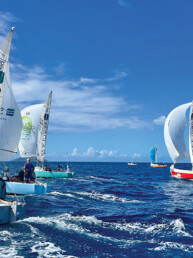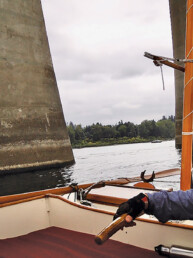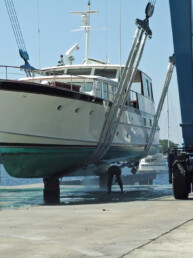Over the years of cruising with our children, I’ve had a number of people contact me for advice about starting out cruising as a family, especially in the Pacific Northwest. I’m happy to oblige and provide relevant information when I can, though I always stress that no two situations are alike. What has worked for our family aboard our Grand Soleil 39, Yahtzee—and continues to work many years and miles later—might not be the perfect solution for others. And that’s okay. One of the great things about cruising, and boating in general, is that there are so many ways to get out and enjoy time together as a family. However different the specifics of technique, location, or approach, the promise of shared experience and of engagement with the natural world alongside our kids is certainly a worthwhile goal.
While we love being asked for and offering advice, we’ve also been fortunate to share the experience with other families while cruising in Washington, British Columbia, Alaska, and beyond. In doing so, we’ve learned a lot about what makes a simple weekend trip to a favorite cove exceed expectations, and we picked up some best practices for venturing off to distant shores. With the hope of inspiring other families to take the leap into cruising near and far just as we have, here are some tips to help send you on your way.
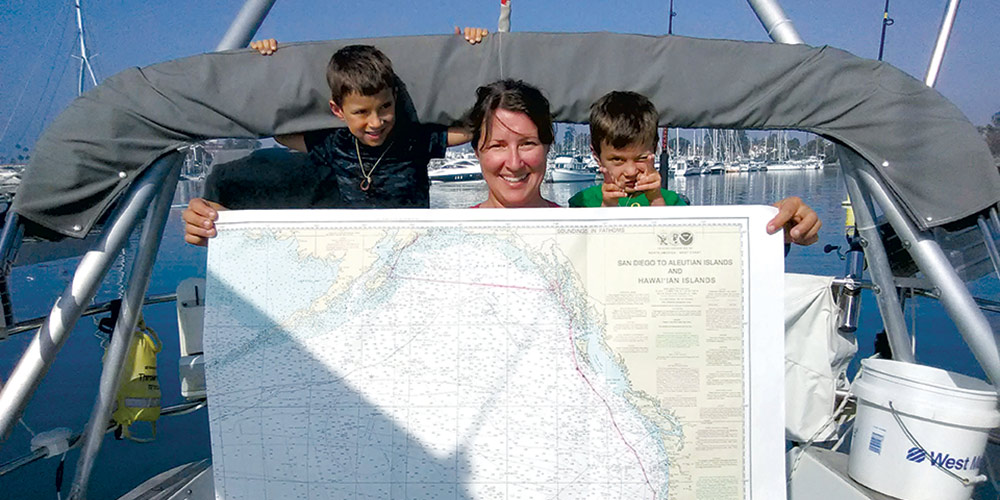
Plan, But Don’t Overwhelm Yourself
The reality of cruising is that everyone out here has a varied set of goals and plans, and a different way of making them work. No particular set of plans is right or wrong or good or bad, they’re just different. That’s what can make living and cruising on a sailboat so amazing. And it doesn’t matter where in the world you are. For new or less experienced cruisers, my one piece of advice is always: Don’t over plan. While grandiose plans and dreams are important, the actual execution of those plans is going to start off in small bites. No matter where you are, just get out and start sailing and let the wider plans come later.
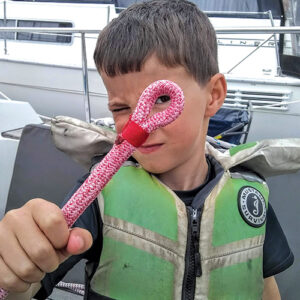
Whether it’s for a weekend, a week, or longer, it’s also important to understand that cruising takes time and can be frustrating when boat problems or weather issues cause delays or changes. It’s imperative to be able to adapt on the fly and to be okay with uncertainty. Our family has learned many times over that no matter how much we plan in advance and look towards what we want to happen, there will always be modifications made along the way.
When you get out there, don’t try to do too much too fast. Sometimes, the best part of cruising is when nothing of great significance really happens. Maybe it’s taking a little longer to prepare and enjoy breakfast in the morning before pulling the anchor and heading out to your next port or anchorage. Or maybe it’s lazily sailing at a knot or two before finally turning the engine on. It can even be lingering a little longer at a state park beach, simply watching your kids throw rocks in the water or play in a tide pool. And I can’t begin to count the times when we’ve stopped in an anchorage for “just one night” and then we’re still there nearly a week later. It happens so frequently we even have a family name for it—“One Week Cove.”
Those moments, the ones that seem to slow down and stand still, can be the most rewarding parts of spending time on a boat with your family. When it’s that good, it feels great to amend previously planned parts of the itinerary. Take time to enjoy life and the places you’re in, and see what happens next. Your plans will evolve from there.
Be Spontaneous
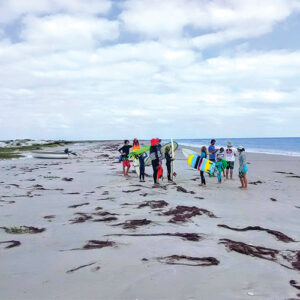
Hand in hand with not overplanning, it’s important to embrace spontaneity. When living aboard in Seward, Alaska, I remember a Friday afternoon when non-live aboard friends came down to their boat and, even though they’d planned to do boat projects all weekend, on a whim we all decided to chuck our plans and head out to a favorite anchorage to raft up for the weekend. A flurry of topping-up on food and preparing boats ensued and, just hours later, the adults were enjoying sundowners in the cockpit while our kids played together on the foredeck, all in the setting of a beautifully mountain-lined Alaskan fjord. It couldn’t get much better.
Being spontaneous can fly in the face of having a good plan, but spontaneity when cruising can bring some of the most cherished memories you’ll make as a family and with friends. And good planning actually facilitates the ability for a well prepared boat and crew to pivot quickly, set previous plans aside, and move forward in a different direction.
Connect With Cruising Friends
We’ve been fortunate to cruise for days, weeks, months, and even a couple years at a time with a variety of other cruising families. These connections started small at first, like meeting others on the dock at Shilshole Bay Marina who were also new to boat ownership and expecting a baby. Happy hours turned into dinners and, before we knew it, we were helping each other with boat projects, sharing anchorages throughout Puget Sound and the San Juan Islands and then, years later, cruising together in Mexico and Central America.
As families on the water, sharing the ups and downs of the cruising life is extremely beneficial. Yes, it’s important for our children to have peers to play with, too, but we’ve found that it’s equally essential for adults to have friendships that are forged over our shared experiences. Being able to help each other along the way and to commiserate through boat projects gone awry, homeschooling, weather analysis and routing, or even to ruminate about upcoming destinations over a cup of coffee is incredibly valuable. We also learn an immense amount from each other on a broad range of topics, boat related or not.
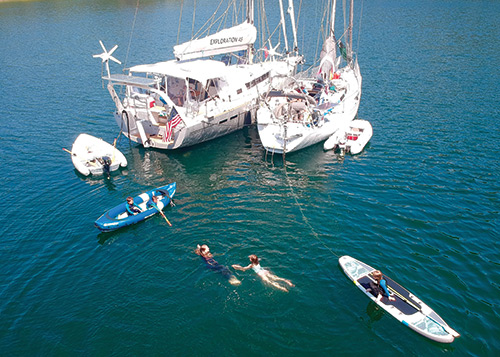
Most of the family cruising friends we’ve made along the way have been chance meetings that have led to quick connections and then long and lasting friendships. Other times, we’ve been introduced through other friends and the web of families grows organically. My best advice is to be approachable and to simply say “yes” when you can. Take up that invitation to join another family for a beach outing, make it a point to strike up a conversation as you pass by on the dock, dinghy over to say hello after a family has dropped their hook, and be willing to help another family out in a pinch.
Along with other sailors that we’ve clicked with along the way, one of the very best parts of traveling by sailboat as a family is meeting non-sailors in the places that we visit. Exposure to the overall human experience in a wide-range of locales, socio-economic conditions, and cultural backgrounds is enriching in ways that have surpassed our expectations. In every place our family has spent time by boat, we’ve found some form of immense generosity and genuine bond that makes us miss it truly because of the people. You never know who you might meet by just saying yes.
Be a Team
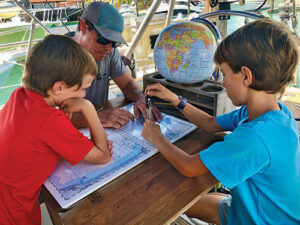
No matter how many friends and fellow cruisers you have around you, there will be times when you’re pretty much alone. That’s where the importance of teamwork and connection as a family is key and, as with any good team, everyone should have a role. If they are old enough, I always encourage people to get their kids involved in the planning and running of the boat.
Children don’t necessarily need to know the minutiae of navigation or exactingly proper sail trim, but involving them in the many stages of cruising can be highly beneficial and rewarding. Look at charts together so they get a sense of place and what destinations you might stop at. Then, when you’re out cruising, show them where you’re going and how you’ll get there. Remind them that their participation is part of what makes this possible, more successful, and enjoyable. What forms of travel are as uniquely shared and collaborative as is the case among a boat crew?
In the planning stages, you can also ask them what things they’d like to do off the boat—hiking, beach combing, walking through quaint towns, bowling, going out for ice cream, and visiting libraries or museums have all been things that our family has enjoyed together. As with rudimentary route planning, you can also involve them in planning things like meals and what you’ll have aboard for entertainment. Work together on setting up a meal plan for breakfasts, lunches, dinners, and snacks. And deciding what games, toys, and books you’ll have aboard can be a two way street. The more everyone is included, the more you’re all likely to gain from the experience.
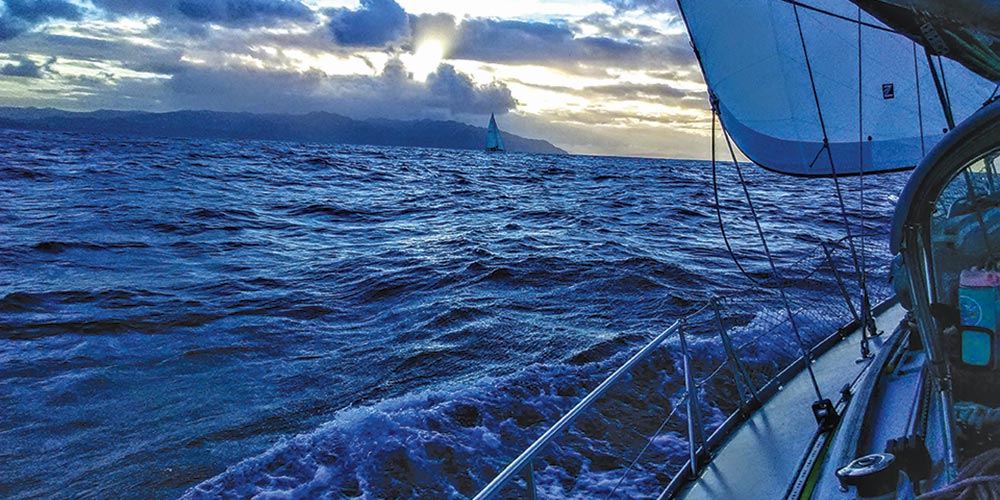
Junior Sailing Works

When it comes time to have your kids more involved in sailing, getting them off your boat and onto others is extremely valuable. Growing up on a 40-foot boat is one thing but, in our view, actually learning the fundamentals of sailing needs to start on a small boat and then work up from there. As our boys have gotten older, we’ve increasingly encouraged them to join junior sailing programs when available because there are multiple layers of benefit.
Junior sailing has presented a great opportunity for them to cultivate a love for the water outside of their parents and their home, to take instruction from other people, to spend time with their peers, and to be in charge of their own boat. Learning everything from knots and rigging to right of way rules, points of sail, safety, and about the wind and waves, it’s incredible how much it translates when they come back home.
Now 9 and 11 years old, our boys have taken junior sailing classes in the U.S., Colombia, and the Virgin Islands and, after every session, they return to Yahtzee with new tools in their budding seamanship bags. There’s almost nothing more rewarding for us as parents than watching them steer our boat close hauled, help with anchoring and docking, and head out alone in our dinghy.
Keep Going, Keep Learning
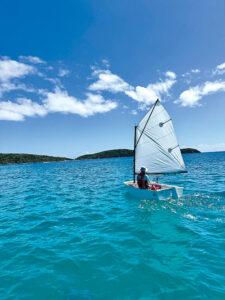
It almost goes without saying that there will be times when things do not go well. Unexpected things happen, there will be frustrating moments and times when you ask yourself, “Why are we doing this to ourselves?” Fortunately, those occasions will be fleeting and they’ll be opportunities for growth. We’ve learned many times over from mistakes made and near misses, and each time there are takeaways that have ultimately led to our success as a cruising family. Yet we’re still learning.
The hardest part of the whole endeavor to set out as a family on a sailboat is simply going. Casting off the dock lines and pulling out past the breakwater with the whole family can be tough, but it gets easier with time and someday you may be ready to cut those dock lines instead of just untying them for a short local jaunt. Whether you’re setting off for a weekend or for years at a time, managing expectations, remaining positive, and being willing to adapt, change, and learn as you go will be among your biggest challenges; but when you do so as a family, the rewards are endless. I wish you well on your family’s journeys into sailing and cruising. Hope to see you out here!
Andy Cross is the editor of 48° North. After years cruising the Pacific Northwest and Alaska with his family aboard their Grand Soleil 39, Yahtzee, they sailed south and are currently in the Caribbean Sea. You can follow their adventures at SailingYahtzee.com.
Andy Cross
Andy Cross is the editor of 48° North. After years cruising the Pacific Northwest and Alaska with his family aboard their Grand Soleil 39, Yahtzee, they sailed south and are currently in the Caribbean Sea. You can follow their adventures at SailingYahtzee.com.



